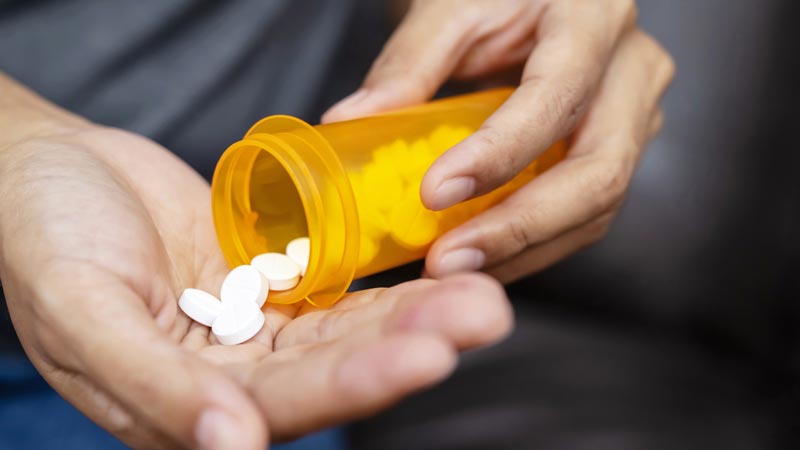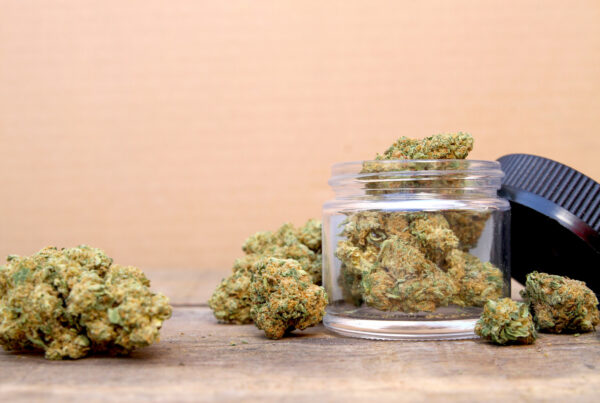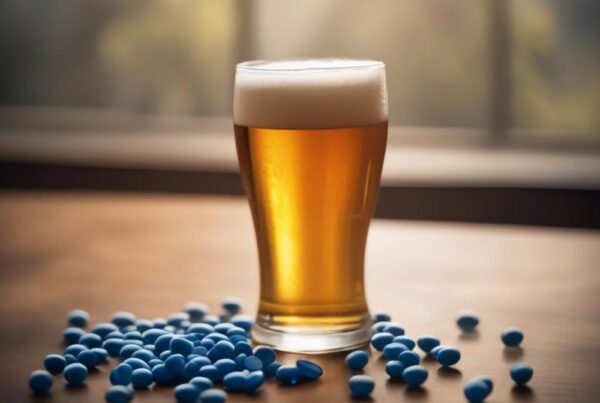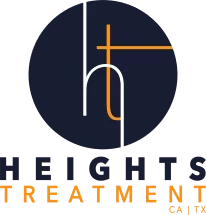Table of Contents
Key Points
- Tizanidine is also known as Zanaflex®
- Tizanidine belongs to the drug class of alpha-2 adrenergic receptor agonists.
- The DEA does not consider tizanidine a controlled substance.
- It is possible to become addicted to this drug when it is misused.
- Tizanidine reduces pain but is not a narcotic.
Tizanidine is a centrally-acting alpha-2 adrenergic receptor agonist.[1] It is not a narcotic, even though it reduces pain. Narcotics specifically refer to opioids.
Tizanidine brand name is Zanaflex®. The DEA does not consider this drug a controlled substance. Tizanidine is an oral pill or capsule that must be swallowed whole. It must be taken two to three times per day, with or without food.
Correct use also includes sprinkling the powder inside the capsules on food. Your body may absorb the drug differently when taken this way.
The FDA has approved tizanidine to manage musculoskeletal spasticity and can also reduce pain. However, it is a muscle relaxer, not a narcotic.
How Does Tizanidine Work?
Muscle spasms are caused by the excess release of the amino acids glutamate and aspartate. These amino acids cause motor neurons to fire, leading to excessive muscle excitation and spasms.
Tizanidine works by inhibiting motor neurons. The drug inhibits the release of amino acids glutamate and aspartate. This prevents the amino acids from causing spasms. The drug also slows down the central nervous system. This promotes muscle relaxation.
The slowed CNS can also cause sedative effects, hence drowsiness as a common side effect.
Why Is Tizanidine Confused With A Narcotic?
Many people think that all muscle relaxers and pain relievers are narcotics but this is false. Narcotics only refer to opioids. Tizanidine is not an opioid, though they have some similarities.
Both can reduce pain but affect the body and brain in different ways. Opioids bind to opioid receptors in the brain and block pain signals.[2] Tizanidine instead binds to alpha-2 agonists in the central nervous system (CNS) and reduces muscle excitation. Both binding mechanisms cause pain reduction.
Opioids are addictive due to their ability to target the brain’s pleasure center. Tizanidine does not do this in the same way. It is still possible to develop a dependence or addiction. The risk of this increases when the drug is abused.
Uses For Tizanidine

Tizanidine treats muscle spasms. Multiple sclerosis, injuries, and strokes can cause spasms. Tizanidine is available as a pill or capsule. Correct ways to take the drug include swallowing it whole or sprinkling the capsule’s powder over food.
Sprinkling it over soft food may be easier for those with trouble swallowing. However, you should discuss this method with your doctor first. Taking the drug this way may alter its effects due to how it’s absorbed.
Zanaflex® vs. Flexeril®: What’s The Difference?
Zanaflex® and Flexeril® are both muscle relaxants. They treat muscle cramps and spasms. Zanaflex® is prescribed to manage conditions that cause muscle spasms, such as MS or brain/spinal injuries.
Flexeril® can treat muscle spasms associated with muscle injuries. It is used in conjunction with physical therapy, and it may not be necessary for long-term use like Zanaflex®.
Side Effects of Tizanidine
The most common side effects include dizziness, drowsiness, vomiting, depression, and rash.[3] The side effects are usually minor and go away after a week or so. Some side effects are more serious, such as fatigue, loss of appetite, jaundice, vision changes, and slow heartbeat.
It may be necessary to stop taking the medication if the side effects become too severe. Seizures, heart problems, and strokes may occur in rare cases. These can become a medical emergency. Some may also develop hallucinations and delusions.
Talk to your doctor if you experience these symptoms. You should also talk to your doctor if you have side effects that don’t go away after a few weeks. Certain long-term side effects may lead to liver and kidney damage.
Tizanidine Drug Interactions
You should avoid using tizanidine with ciprofloxacin, potassium citrate, and fluvoxamine. Their use may cause negative interactions. Talk to your doctor before you take tizanidine with any other medications. Certain drug interactions can cause dangerous side effects, and some interactions can be fatal.
Is Tizanidine Addictive?
Tizanidine has the potential for tolerance, dependence, and addiction. It is not addictive in the same way as narcotics because it affects the brain differently. However, the brain can still become dependent on the presence of tizanidine.
This may become more of an issue if you misuse the medication. Misuse includes snorting or injecting the medication. It may also involve taking more pills than prescribed. Becoming dependent will make it difficult to live normally without the drug. This can lead to lying, stealing, and secretive behavior to get more tizanidine.
Tizanidine Addiction Symptoms
You may develop cravings for tizanidine once you become dependent or addicted. You may develop a tolerance after taking the same dose for a while. This may require you to take higher doses to get the same effect. Taking very high doses is dangerous and may cause an accidental overdose.
Tizanidine can cause rebound and withdrawal symptoms when suddenly stopped. Rebound symptoms include increased muscle spasms and pain. Withdrawal symptoms include sweating, nausea, fever, mood changes, and changes in heart rate.
Some withdrawal symptoms are dangerous and potentially fatal. These include seizures and heart attacks.
Understanding Tizanidine
Tizanidine is a muscle relaxant used to treat muscle spasms. It slows down the central nervous system and reduces pain associated with muscle cramps. Though it is not a controlled substance, it has potential for abuse. If you find that you are addicted to this drug, seek professional help right away.
Tizanidine Addiction Treatment
If you are suffering from a tizanidine addiction, it is important to get help before the problem worsens. Finding the right program is essential to ensure you receive treatment that meets your unique needs.
Individualized Intensive Program
This program involves three months of treatment split up over three phases. Phase one involves six hours of therapy every weekday. Two hours of individual mentoring per week will also help you grow and learn more about your addiction.
Phase two will lower the therapy to three hours of therapy every day. You will also receive four hours of individual recovery mentoring.
Phase three consists of three hours of therapy spread across three weekdays. Individual mentoring from Transcend Mentoring will be increased to six hours per week. The individualized intensive program is tailored to the individual for the best results and gives you the freedom to continue work, school, and other responsibilities.
Partial Hospitalization Program
PHP is perfect for those who have just left an individualized intensive or residential program. If a residential program is too much for you, a PHP is the ideal option. You still have the freedom to go to work and perform other duties without compromising your treatment.
You will undergo a holistic assessment when you start the program. You will receive group, family, and individual therapy. Different therapy options will give you a better perspective on your addiction and mental health issues.
Intensive Outpatient Program
Most people who complete the PHP program move on to the intensive outpatient program. This program maintains the flexibility and freedom of the previous options. It focuses on treating addictions as well as mental health problems.
Mental health issues often trigger addiction problems. Intensive outpatient programs help you grow mentally. This allows you to handle difficulties in your life more productively. Therapy is held three to five times weekly, with a minimum of three hours per day. You can return home in the evening.
Outpatient Program
You will benefit from EMDR, neurofeedback, CBT, and equine-assisted psychotherapy in this program. There are also art therapy, trauma-informed yoga, and mindfulness options available. These help reduce anxiety and depression while enhancing positive experiences and thoughts.
They also help you view the world and yourself in a different light. Using these solutions will help you understand your unique way of thinking and behaving. New coping skills learned through therapy are monumentally helpful for getting back on track.
Co-Occurring Disorders and Mental Health Treatment
Mental health problems often lead to substance abuse. Depression, anxiety, and bipolar disorder can make it difficult to lead a normal life. They also make it difficult to cope with life’s problems without delving into substance abuse problems.
Evidence-based therapies can help you overcome past traumas and learn how to cope with new problems. They can also make your way of thinking more constructive and positive. This will give you a better foundation for your future.
Frequently Asked Questions
Common questions about this medication.
The Heights Treatment Editorial Guidelines
There is a vast amount of misinformation online especially as it relates to health & wellness. We have made it our mission at The Heights Treatment to provide accurate, medically sound content that has been medically reviewed by a doctorate level clinician so that you can trust the information contained within our website.





